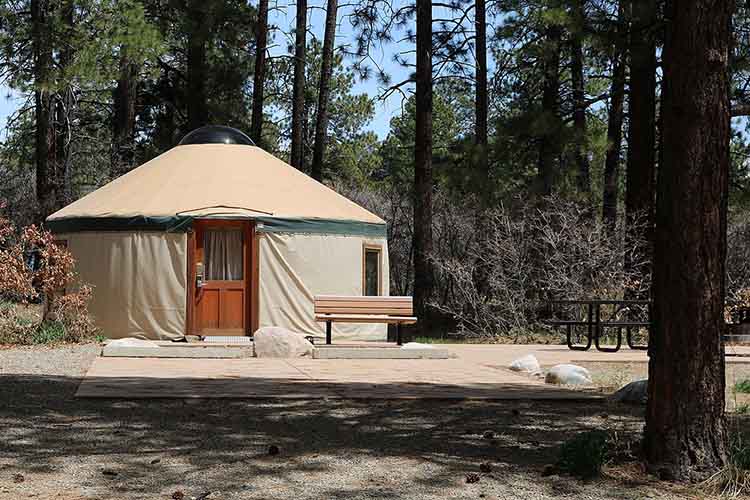Yurts are increasingly popular for those looking for alternatives to the high cost of owning a home or vacation home. They’re also used for creating additional living spaces at cabins that have some extra land. Great for guest houses, vacation rentals, or just extra space.
They are more affordable and relatively easier to build than a traditional cabin. They have become popular structures for glamping as they provide a unique but comfortable experience in the outdoors.
While yurts are generally simple in their design with their open plan design, modern yurts can range from basic to more elaborate structures that include all the amenities we expect in our modern homes including plumbing, electricity, and other modern conveniences.
Yurts have many uses including a guest house, a temporary home while you are building your dream cabin, a base camp for adventures off the grid, to generate rental income, or even as a home office or mediation space.
If you are considering a yurt, you can either build it yourself or buy a yurt kit. Either way, there are a variety of upgrades that can be made to the basic structure including how you access the structure. A modern yurt has several door options you can incorporate and upgrade from the standard door.
Here are some door examples to consider.
Yurt Door Options
1. Standard Canvas Door
Most yurts or yurt kits come with a standard door made of canvas attachable to the door frame. You can unzip the door canvas, fold it up, and hook it to the door header.
2. Wooden Door
Upgrading your yurt’s canvas door to a wooden door is a common upgrade, particularly in areas where the weather is a concern. A canvas door might be too flimsy if you’re dealing with wind, snow loads, and heavy rain.

3. Double Wood Doors
You may add some elegance to the entrance by using double wood doors. These rounded ones are sometimes referred to as hobbit doors.
To make the doors more beautiful, you could ask your local supplier to make them darker before varnishing them.
View this post on Instagram
4. Rain Protection
You can attach rain protection to the yurt’s roof above the door to keep rainwater away from the entrance. This is often a v-shaped piece of vinyl over the room that diverts rain from falling at the doorway. Check with the yurt company as these are often part of your yurt purchase.
You can also build a covered entryway to upgrade the yurt and provide protection from rain and snow.
Consider the weather conditions when planning your yurt so you stay dry and comfortable inside.
5. French Doors
French doors are a great upgrade to your yurt’s standard doors. French doors open up and let the sun and outdoors inside, making them a nice feature on a yurt.
6. Door Placement
Doors on yurts tend to be south facing to allow light and warmth to come through. This also serves as a wind deterrent as winds typically come from the north or north-west.
Yurts generally feature one door but they certainly could be designed with two doors in mind depending on the functionality you are looking for. For each door, you’ll want to attach a thin piece of the vinyl underneath the door that drapes over the platform. This will serve to prevent water from entering the platform.
7. Screen Doors
If you live in a bug-ridden area with pesky flies or mosquitos, you’ll certainly want to consider upgrading your door to add a screen door. You can also add bug screens to the yurt windows so that you can let fresh air in and keep pests outside.
8. Yurt’s Accessibility
There are several ways to make your yurt accessible for people with special needs. These include grab bars, levered doorknobs, and tread-plate door thresholds that can create a barrier-free environment.
When you are designing your yurt, consider the first impression you will make and the functionality of your front door! Upgrading the standard door is an easy upgrade to yurt living.

